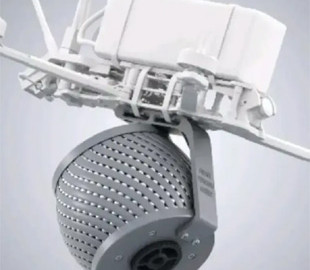
Ukrainian engineers have created new combat parts for kamikaze drones, which are much better than the usual ones that scatter debris during an explosion. This allows you to hit a large area and inflict heavy losses on the Russian invaders. The manufacturer of kamikaze drones "Wild Hornets" has tested and will equip its own drones with new types of combat parts produced by the Ukrainian company, Shock Wave Dynamics (SWD).
"Wild Hornets" received a batch of powerful ammunition for FPV drones of various sizes and types, including fragmentation, high-explosive and shock-core. Improved drones have already been sent to the front line for testing.
SWD talked about the combat part of drones — the company produces so-called cold ammunition, which comes without a detonator and explosives. They are designed to be equipped with drones in the field by military engineers. Among the ammunition – fragmentary, cumulative, universal and special. All BZ have specific properties adapted to specific use cases.
The company says its main goal is to improve the efficiency of every kamikaze drone used on the battlefield. This is achieved by creating optimal damage sectors, mass optimization, balance between the explosive substance, quantity, weight and speed of the damage elements.
«We create such ergonomics of combat units that minimizes the time for equipment in field conditions. Our company is constantly improving existing and developing new products, relying on feedback directly from the battlefield, — says the SWD representative.
High-explosive fragment for FPV drones – this is a new SWD product. Designers believe that recently, suboptimal high-explosive fragmentation ordnance has been used on kamikaze drones. The usual cylindrical charge is fixed along the axis of the drone. Such munitions have a rather narrow band of fragments, which form a rather dense but narrow band. With this distribution, most fragments fly into the sky or into the ground.
To increase the effectiveness of the ammunition, the SWD changed its shape and location. As a result, a less dense, but more effective fragment field is formed during the explosion due to the expansion of the affected sector and the reduction of unreached zones. As a result, fragments fly more horizontally, less of them goes into the air or the ground. This achieves more effective damage to targets behind an obstacle, for example, inside a vehicle.
At ground level, the classic charge also does not work very effectively, its field of attack is noticeably limited. A wider sector of defeat allows the fragments to hit more targets, for example, Russian soldiers standing on the ground.
The design of the fragmentation munition is created in such a way as to ensure the maximum density of evenly spaced impact elements. To get the maximum efficiency from the energy of the explosion and to ensure the maximum speed of the fragments, a liner of plastic and paraffin is placed between them and the explosive. Element of defeat — a sphere with a mass of 0.9 grams. The number of fragments – 576 pieces. For higher speed, the charge is attached to easily removable type Velcro bands.

